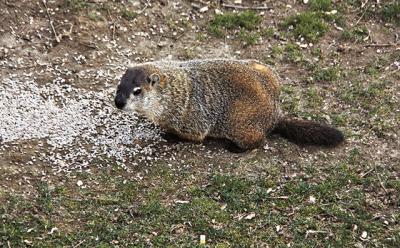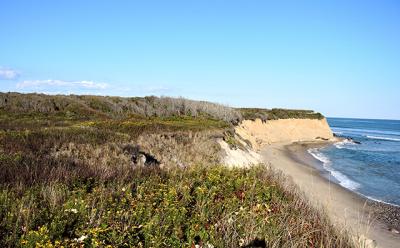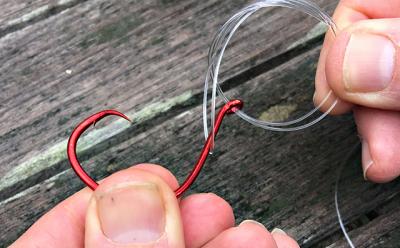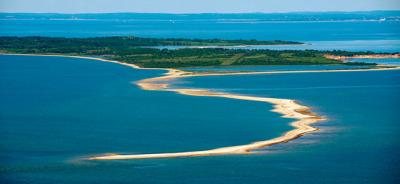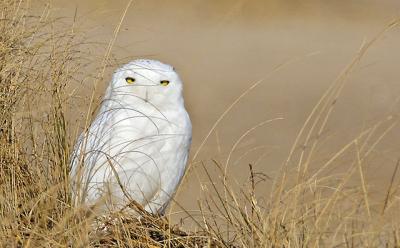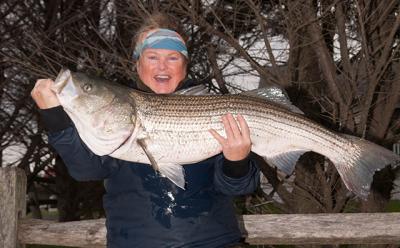Nature Notes: Superlative Montauk
Nature Notes: Superlative Montauk
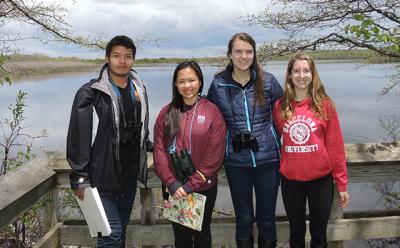
I’m not a world traveler, but I’ve been around. If I had to name my 10 favorite places of the thousands I’ve spent time in, Montauk would be very close to the top of the list.
Of all of Long Island’s hamlets and villages, Montauk is by far the largest and it has the most dedicated open space of any of them. It also leads in number of habitat types, everything from tiny depressions where insectivorous plants and cranberries thrive to large woodlands, heaths, and grasslands. Montauk’s maritime grasslands were once the second largest prairie on Long Island after the Hempstead Plains. Wildfires once kept them healthy and low, but in their absence, they are growing up at a fast rate, yet still comprise the most acreage of native grasslands on Long Island.
Montauk Harbor was once the largest freshwater body on Long Island. Since the mid-1920s it has been a tidal bay. Fort Pond, also in Montauk, has never been tidal except when it was “seapoosed” prior to the extension of the Long Island Rail Road line along its north end. It’s the second largest freshwater body on Long Island.
Montauk is the hamlet or village with the most marine coastline. There are 12.5 miles of ocean beaches from Montauk Point to the beginning of the Napeague stretch. From the Point westward along the Block Island Sound and Fort Pond Bay to Napeague Harbor there’s another 16.9 miles of shoreline. Add another 1.5 miles of shore along Montauk’s western boundary, the west side of Napeague Harbor, and you get a total of almost 31 miles of maritime coast. At 2.5 miles an hour it would take an average walker more than half a day to get from one end to the other.
By all accounts, Montauk was an island separated from the hamlet of Amagansett by open water between ocean and bay less than 3,000 years ago. Consequently, it was not only at the end of a very long island, it was isolated from the bulk of it. The Appalachian woody plants that reached New York City after glaciation had to travel another 100 miles to the South Fork’s very end, stopping for a few thousand years before crossing the Napeague water gap to Montauk. That is why some — yellow poplar, liquid amber, cottonwood, white pine — have yet to get there. Pitch pines from the west arrived less than 100 years ago.
Montauk has blue-spotted salamanders, which are wanting on the rest of Long Island, and a few other plants and creatures such as the federally endangered sandplain gerardia, an orchid, and a bushy frostweed, all of which are extremely rare to the west of it. No wonder Montauk is the perfect place to start an apprenticeship studying nature.
The Third House Nature Center was started by the late Carol Morrison more than 25 years ago, when Montauk was on the cusp of the worst siege of development the South Fork has ever experienced, to teach Montauk’s young people about nature. It thrived, providing annual natural history instruction to hundreds of Montauk School kids over the years. At first it used the county park, thus the name Third House, but then a town-owned house on the west bank of Fort Pond became available to it.
Lots of wonderful events took place at Fort Pond House until the time when former East Hampton Town Supervisor Bill Wilkinson placed the house on the market. Concerned Citizens of Montauk and the Third House Nature Center sued to block the sale of the public property. The town condemned the building, and closed it to the public. It stood idle for several years, but never sold. Supervisor Larry Cantwell’s administration took it off the market and began to restore the house and property, which became known as Carol Morrison Park. It was reopened to the public earlier this month, and is once again available to such groups as the Third House Nature Center.
In 2013, the club started taking interns from East Hampton High School’s senior class, a program started by Sandy Taylor and Linda Brandi of the Garden Club of East Hampton. It includes college scholarships.
It started around 2001 under the aegis of the East Hampton Town Natural Resources Department while I was its director. It’s now in its 15th year and going strong. While the Garden Club used to sponsor one or two interns a year, the Third House Nature Center has been adding to that number, this year guiding four high schoolers through the jungles of Montauk almost every Sunday through the fall, winter, and spring, right up until graduation.
The nature center has been concentrating on one of Montauk’s richest and least-known habitats, Big Reed Pond and its surrounding uplands. It has eels, fish, waterfowl, breeding songbirds including blue-gray gnatcatchers, orchard orioles, and Virgina rails, along with several osprey and turkey vultures, and even the occasional bald eagle.
This year the four interns — Axel Alanis, Cien Estuye, Erin Nolan, and Ally Karlin — have studied many different aspects of that combined aquatic and riparian habitat, including its trees, shrubs, fishes, and other wildlife, its geography, and the spread of phragmites as it takes over the shallows between Little Reed and Big Reed as measured with a GPS. The interns have identified and tagged all of the different tree species and have begun measuring their diameters at breast height and aging them with a tree ringer. One of the oldest is a 48-year-old hickory, which probably started out after one of the last big grassland wildfires. A very large red oak measured 30.87 inches across.
One of the key findings, although not a pleasant one, during the last two years has been the growth of blue-green algae, or cyanobacteria, which has shown up in harmful concentrations in ponds and lakes far and wide in mid and eastern North America. The blooms have lead to the closures for health reasons of many local water bodies including Georgica and Wainscott Ponds in East Hampton Town, and Wickapogue Pond, Mill Pond, and Lake Agawam in Southampton Town. Cyanobacteria is fed by nutrients, especially nitrogen, and that begs the question, why Big Reed? There are almost no houses with septic systems in its drain field. Perhaps the nitrates stem from the uric acid wastes of birds and waterfowl and the feces from wildlife and horses.
For these last three years, the interns have presented what they’ve experienced during a nature day at the Nature Conservancy office on Route 114 in East Hampton. That day is coming up on Saturday, and they have much to be proud of.

